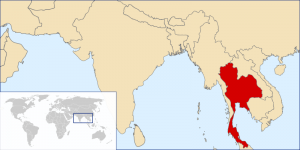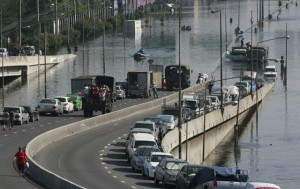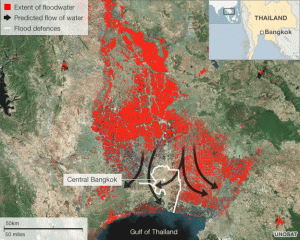As you already know, Thailand is suffering major floods observed since last July with considerable rainfall during this long period of time normally watered by the rains of the South-East Asiatic monsoon (albeit much stronger this year). Many parts of the country are invaded by the water which do not stop to rise near (and now far from) the rivers. Despite the efforts deployed by the local authorities, deaths and disappearances are multiplying and ever larger areas are going under water.
 A lot has already been told about flooded plants in the Bangkok suburbs because Sony and Nikon (most prominently) communicated on the issue. Nevertheless, as for last Spring earthquake in Japan, the consequences are actually extending beyond this. I would like to take a moment to summarize the informations I could collect from various sources who accepted to provide data.
A lot has already been told about flooded plants in the Bangkok suburbs because Sony and Nikon (most prominently) communicated on the issue. Nevertheless, as for last Spring earthquake in Japan, the consequences are actually extending beyond this. I would like to take a moment to summarize the informations I could collect from various sources who accepted to provide data.
- If some photo camera plants are inundated (Sony plant was very spectacular), there are also plants rendered totally inaccessible and evacuated even before destruction would occur.
- Some stocks and storage locations for finished goods are currently isolated and their contents no longer can be shipped out of Thailand before some water levels go down.
- Communications are very heavily disturbed in the Bangkok area (and even more in the rest of the country), as a direct consequence of water rising (which submerged the capital’s second airport) or of the behaviour of local residents who decided to park their cars on the highest portions of the highways (to try and avoid water in case of dam rupture).
- The production of some complex components has become quite difficult (it is already known that the hard disk drives market is going to suffer a real shortage in the coming months).
- Some electronic components are very perturbed: Several manufacturers of printed circuit boards are stopped and looking for replacement solutions (probably relatively easy) and we can observe a real tension on the market for LEDs (think about the LCD and EVF backlights in our photo cameras) or on the capacitors market (virtually present in all electronic designs today).

Nevertheless, we can already see that the tragic experience acquired several months ago in Japan is bearing fruits. Many companies are more prepared to extreme solutions, like switching over to a new supplier or moving all of a production capacity to a new location.

Sony announced being able to keep on shipping the Sony Alpha 77 from existing stocks manufactured before plant closing in Thailand. But the status of the Alpha 65 and Nex-7 is less clear and this is the sign of very low stock levels or no stock at all (Sony expected to manufacture in October-November to cover end-of-the-year purchases).
At Nikon, we can feel a certain frustration (or is it fatalism) and the fierce determination to overcome Thailand’s destructions (a camera known as the Nikon D7100 seems to have been one of the most prominent direct victims).
Canon does not have SLR camera production located in Thailand or directly impacted by the floods (but ink-jet printers are hit hard and the new Canon Pixma Pro-1 sees its launch delayed since the Ayutthaya flooding). But the production is already perturbed for more than one point-and-shot compact cameras because of the shortage of several electornic components (see above). The impact may be as large as to being visible in the financial annual report.